Padel Builder
Construction of padel courts
French manufacturer of padel courts. 100% PADEL will help you with your project from A to Z.
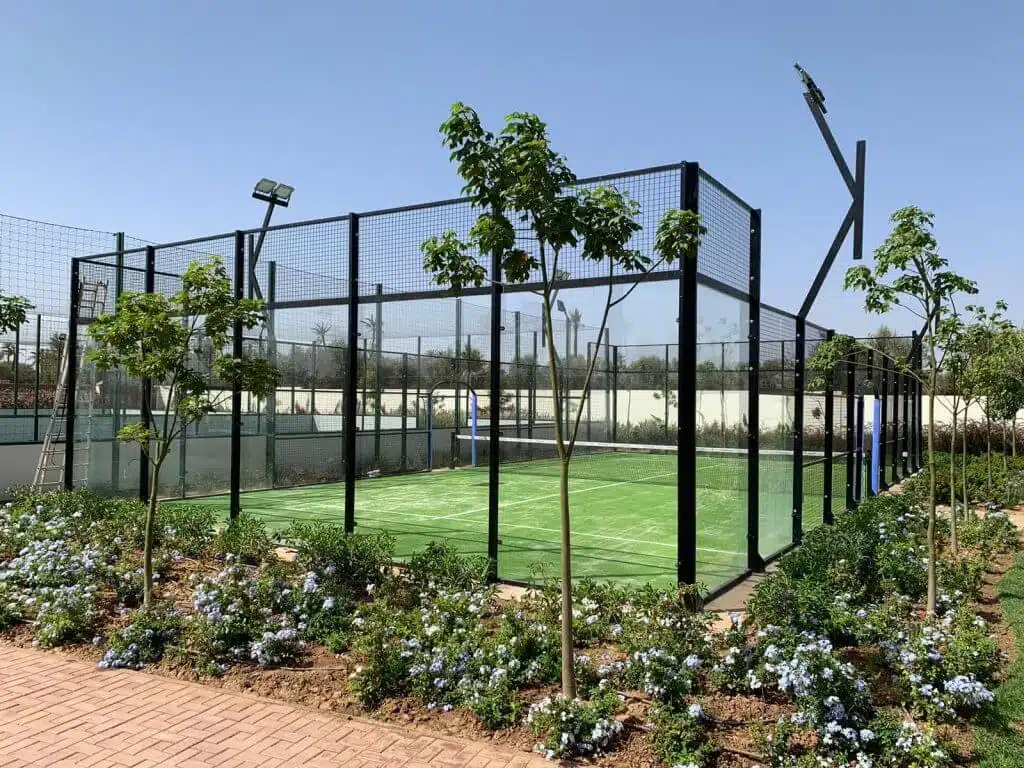








100% French manufacturer & installer

Jérémy Scatena
Professional padel player at the controls
100% PADEL is a French company run by Jérémy SCATENA, a padel professional. This affiliation with a professional player enriches our company, as it enables us to design padel projects that perfectly meet players' needs, and to pay attention to the details that determine a project's success. We attach great importance to the orientation of the courts, securing the grids, guaranteeing safety, creating a friendly space and a play area outside the courts, as well as the height of the covers and the choice of lighting fixtures.
Our company is with you every step of the way, from earthworks and slab laying to delivery and site assembly.
The fact that we carry out all the steps involved in creating your padel courts in-house means you have a single point of contact throughout the project, enabling you to control all production costs.
Our padel court models
You can customize any element of a padel court.
100% PADEL, padel manufacturer and builder, will design and install it for you wherever you want.
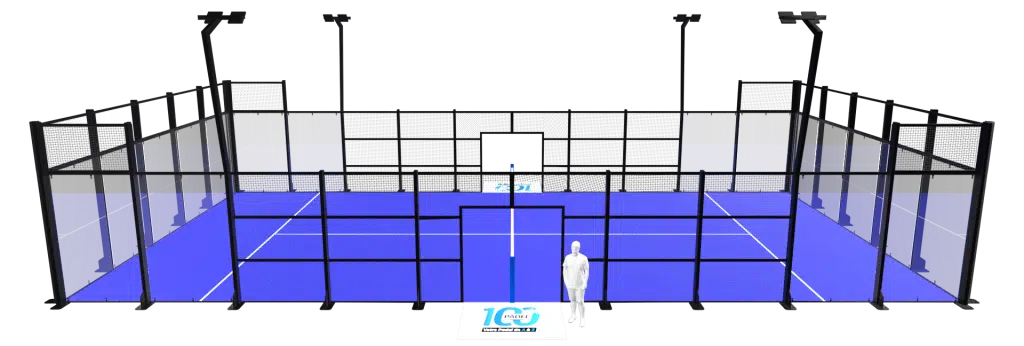
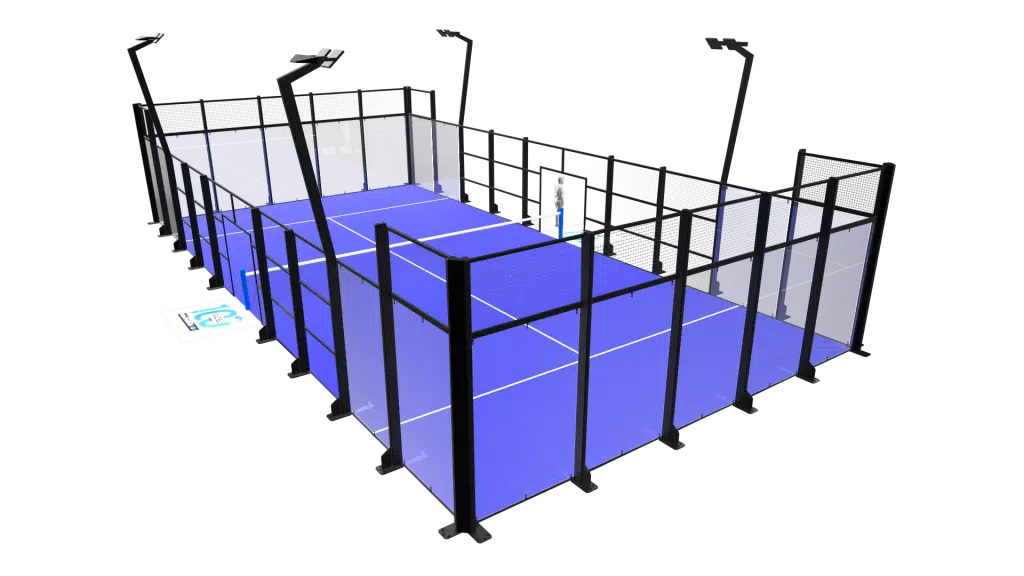
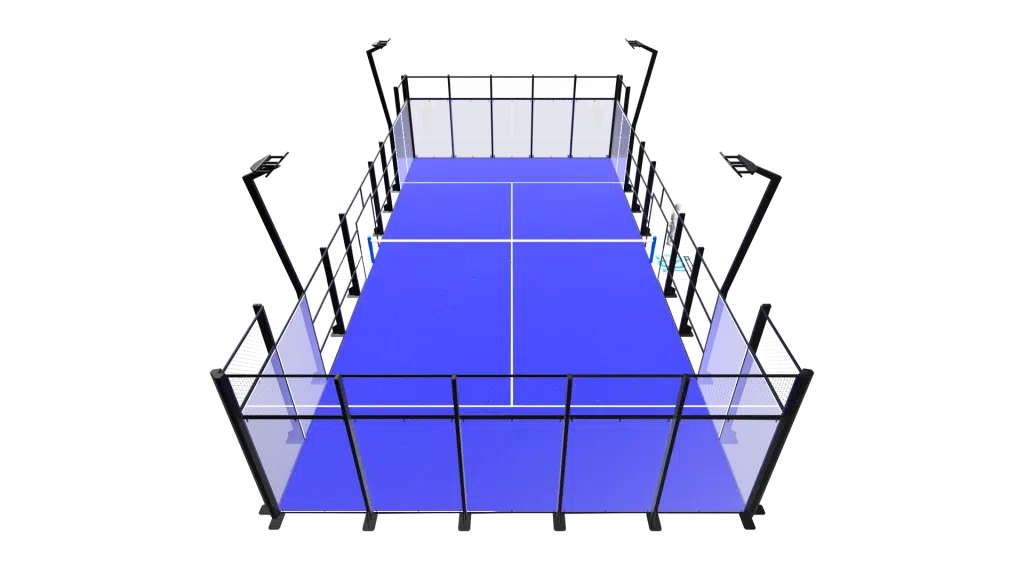
Classic padel court
Robust model
Structure: 100×50 mm pillars with buttresses
Electrowelded mesh 50x50x4 mm. Approved tempered glass anti-injury system.
Neoprene-protected glass anchoring with locking bolts.
Grass: fibrillated, monofilament or supercourt
Lighting: straight lighting, 3 m-high lighting pillars made of 80.60 cold-galvanized tube, 200w LED lighting per bulb
Final treatment: oven-lacquered paint. Custom color.
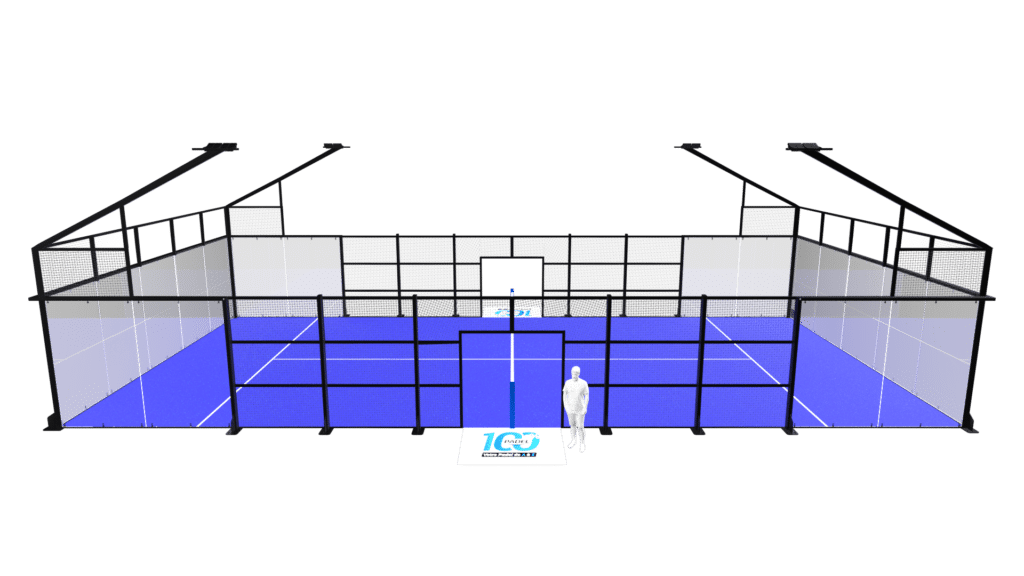
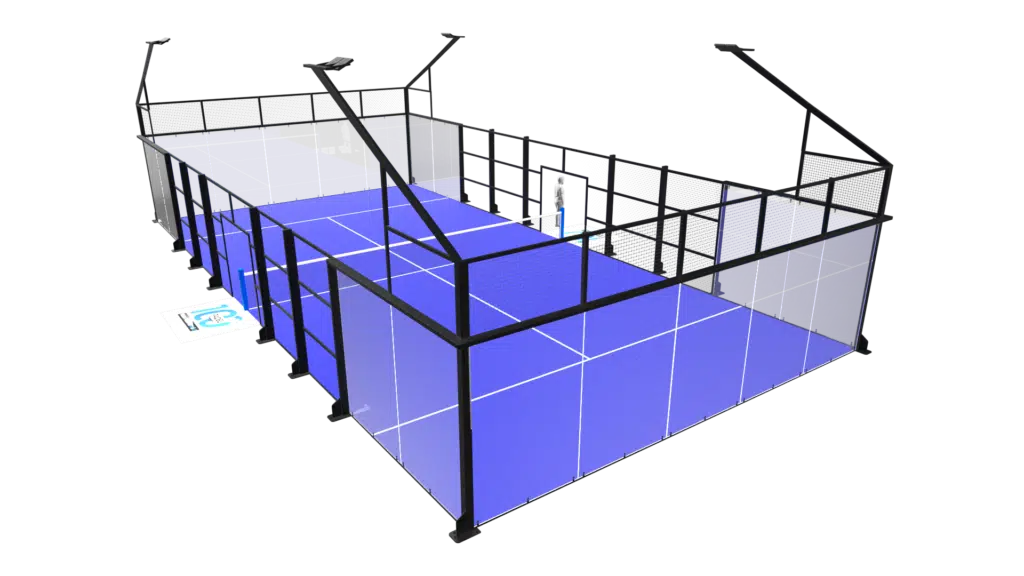
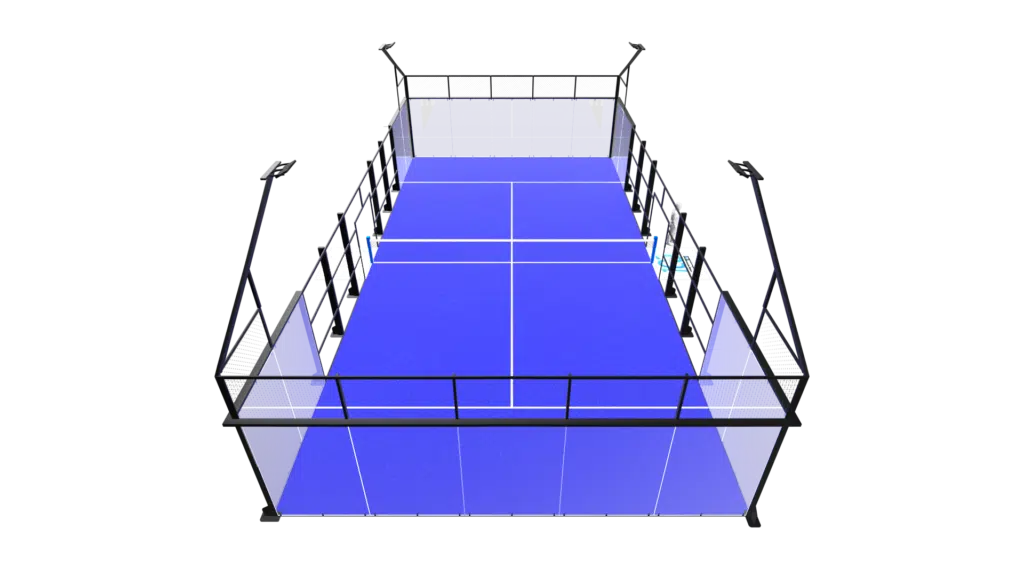
Panoramic padel court
Top-of-the-range model with sleek design
Structure: pillars 100×50 mm. with buttresses
Electrowelded mesh 50x50x4 mm.
Approved tempered glass anti-injury system.
Turf: fibrillated, monofilament or supercourt
Lighting: straight lighting, 3 m high lighting pillars made of 80.60 cold-galvanized tube, LED lighting 200w per bulb
Finish: baked paint, color to customer's choice

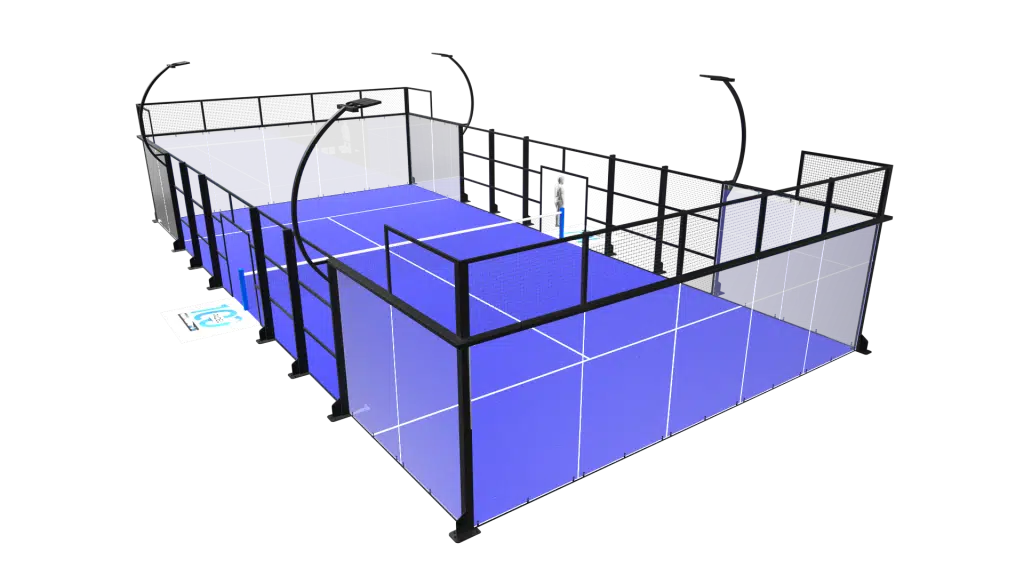
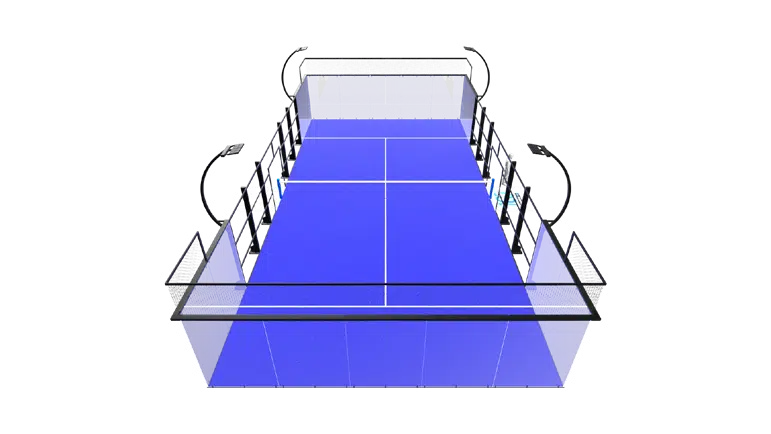
Full panoramic padel court
The spectacular view model for video or TV
Structure: pillars 100×50 mm. with buttresses
Electrowelded mesh 50x50x4 mm. Approved tempered glass anti-injury system.
Grass: fibrillated, monofilament or supercourt
Lighting: straight lighting, 3 m high lighting pillars made of 80.60 cold-galvanized tube, LED lighting 200w per bulb
Finish: baked paint, color to customer's choice
Which terrain model would you like to install?
High-performance padel surface
in all seasons
Grass is undoubtedly the most important element of a padel court.
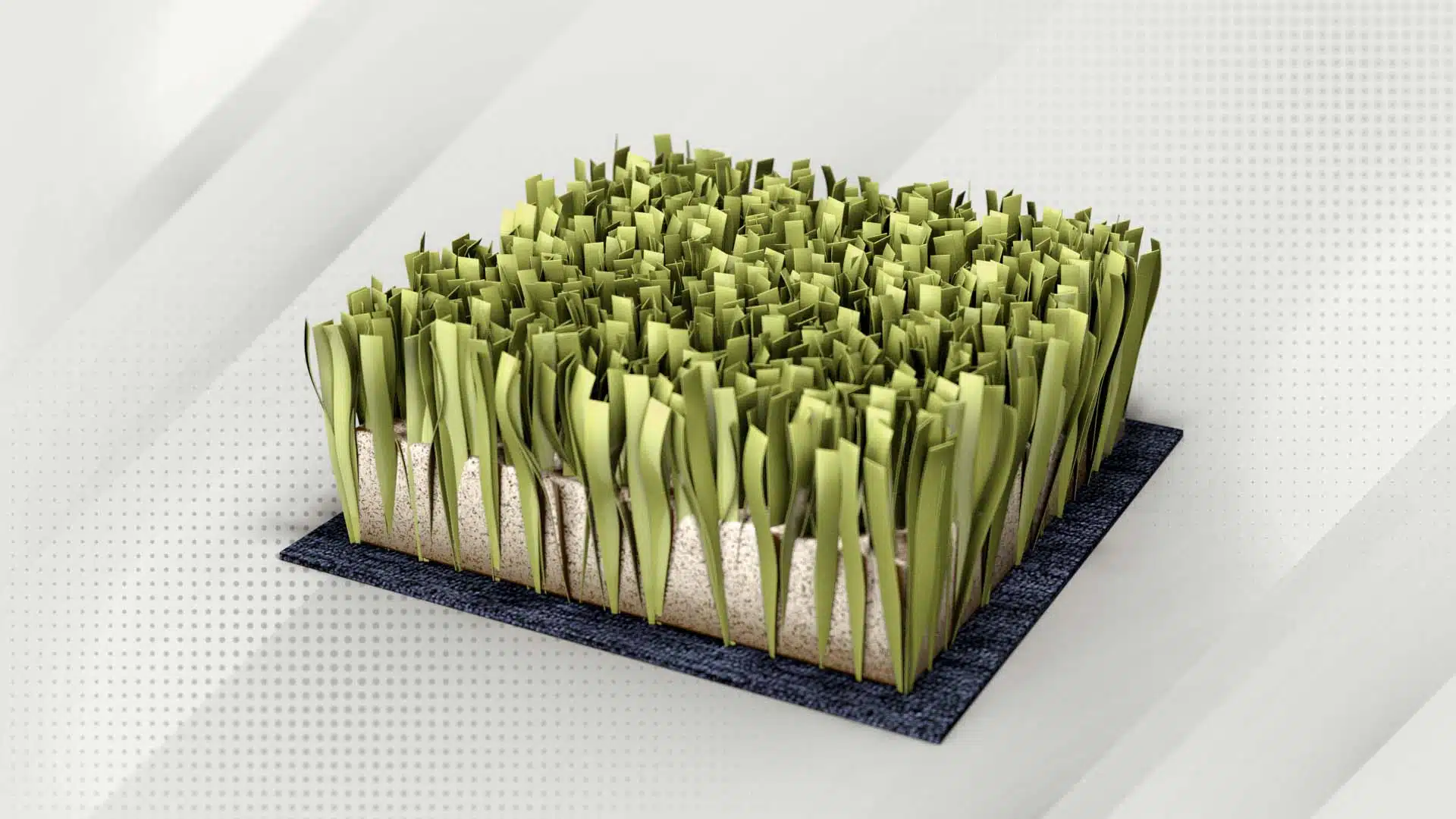
The first technology developed
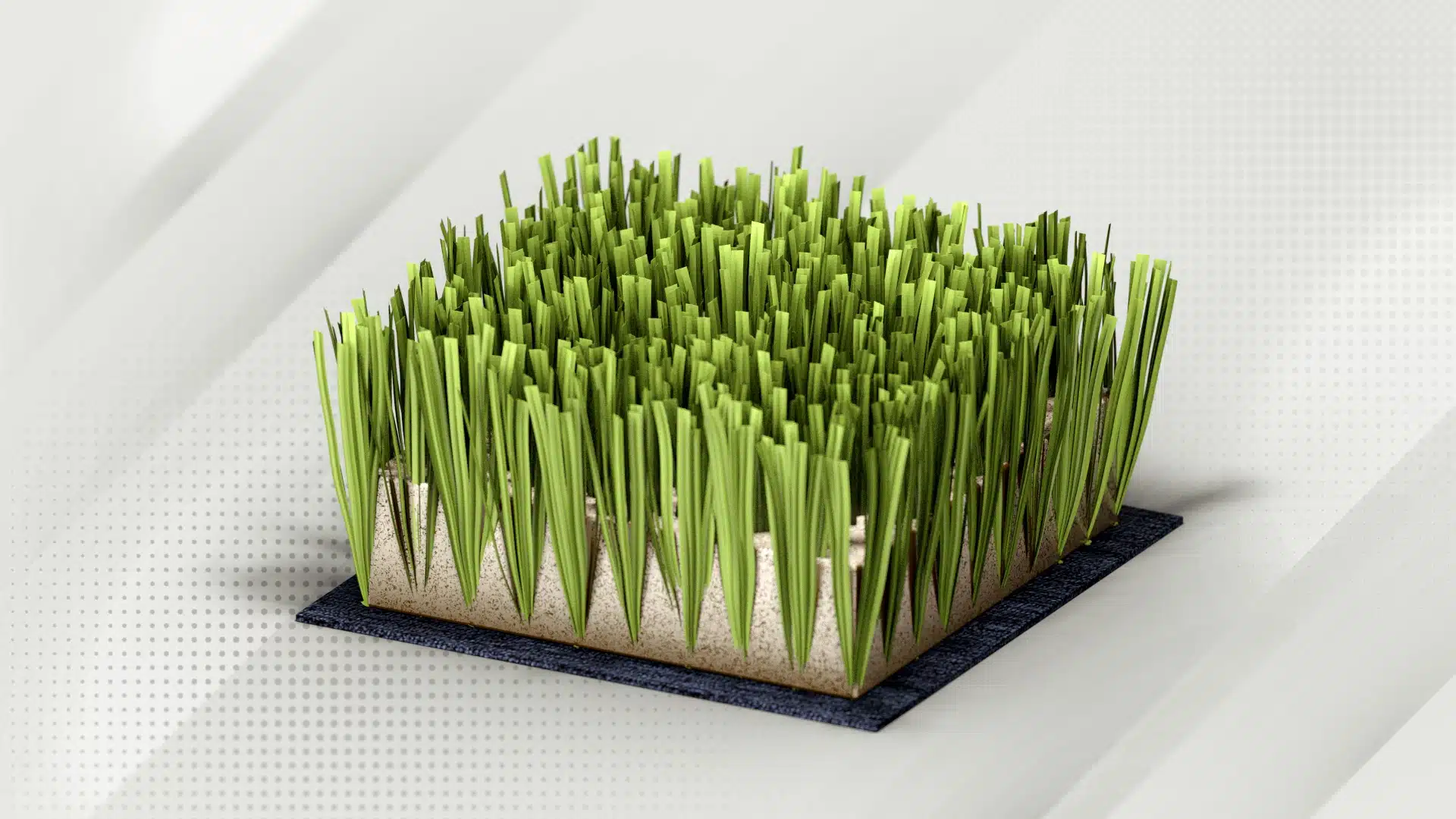
Fiber toughness and wear resistance
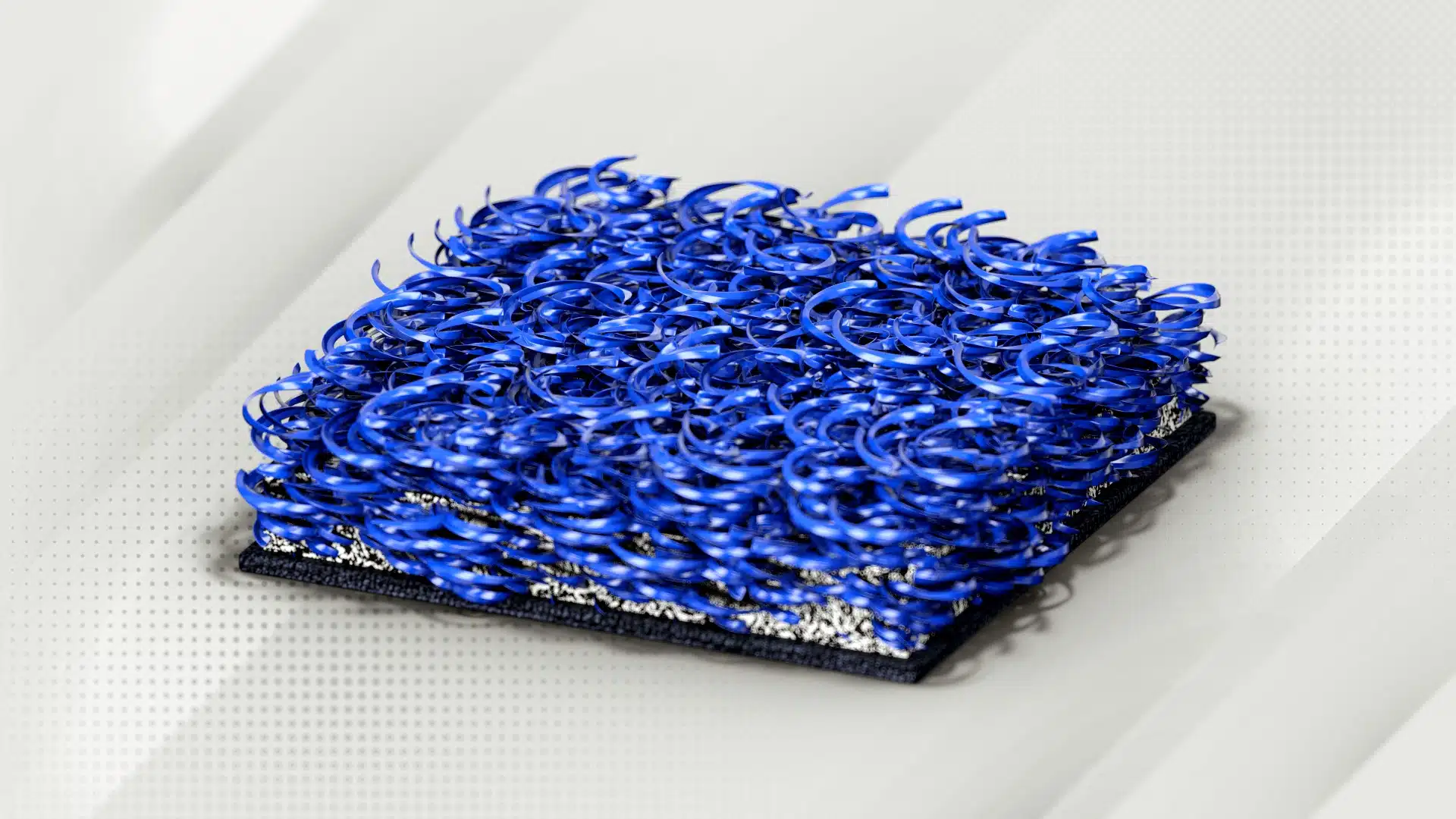
Sand-free WPT and Padel Premier turf
Customize your
padel court again and again...
Our padel courts can be customized. If you're a club, we can paint the steel structure in a RAL color to match the image of your sports complex. For the artificial turf, three colors are also available (green, blue and clay).

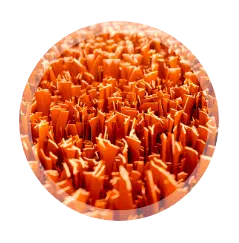
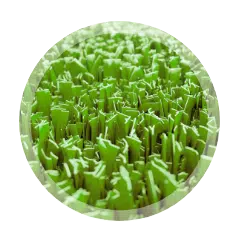
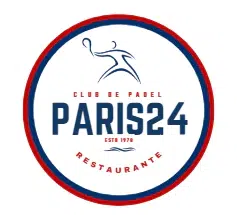
Steps in building a Padel court
Overall, building a padel court from the ground up involves the following steps:

First, we have to remove the topsoil and then place pebbles, which we then compact.
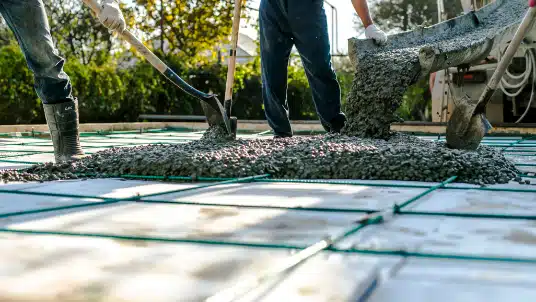
(including slopes for water drainage). This 231 m² reinforced concrete slab is floated by helicopter and poured in one piece.

The prescribed dimensions for a padel court are are 20 m long and 10 m wide. The playing surface of a padel court is 200 m².
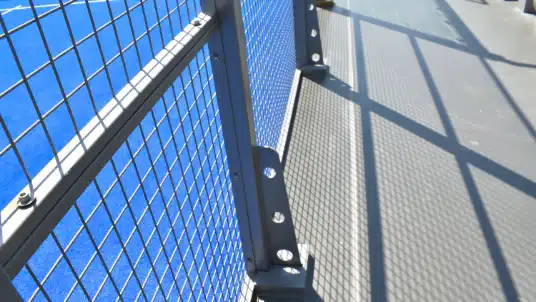
A perimeter sill is mandatory to secure the structure of your padel court padel court. Composed of numerous steel pillars and beams for high shock resistance.
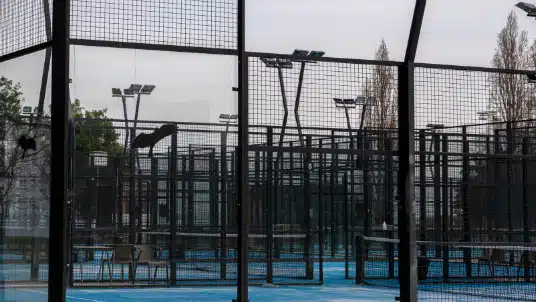
The glass used in the construction of the padel court is CE-certified and SECURIT-approved. 10 mm (classic court) and 12 mm (panoramic court).
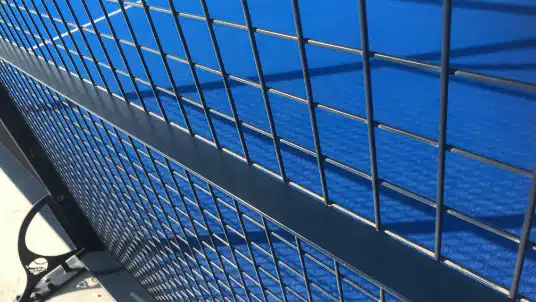
The padel court is enclosed by an electro-welded electro-welded mesh, with an anti-injury protection system that prevents direct contact with the ends of the grids.
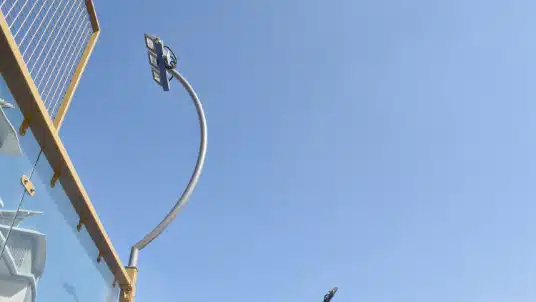
Artificial lighting should be uniform and not interfere with the vision of players, referees and spectators. It must comply with standard EN 12193 (lighting of sports facilities).
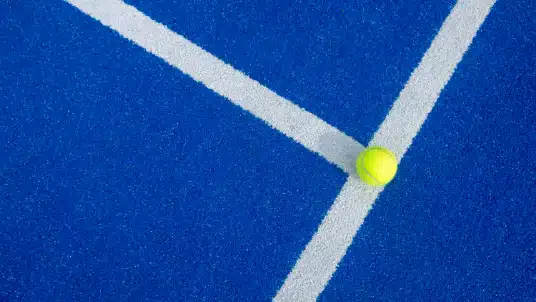
Grass is made up of fibrillated, straight or curly fibers, depending on the type chosen.... The materials used are PP (polypropylene) or PE (polyethylene).

The net must be 10 m long and 0.88 m high at the center to 0.92 m at the ends.
Frequently asked questions
about creating a padel court
What authorization is required to build a padel court?
The authorization required to build a padel court depends on the legislation in force in your country, region or municipality. In general, the construction of any type of sports or leisure structure requires the appropriate authorizations and permits. Here are the general steps you'll need to follow to obtain authorization to build a padel court:
Find out about local bylaws: Start by consulting your municipality's zoning, planning and building bylaws. These regulations will determine whether a padel court is permitted in the area where you plan to build.
Apply for a building permit: If construction is permitted in your area, you'll usually need to apply for a building permit from your municipality or competent authority. Requirements will vary according to location and local regulations.
Environmental impact study: In some cases, you may be required to carry out an environmental impact study to assess the consequences of your project on the local environment.
Compliance with building standards: You'll need to design your padel court in accordance with the building and safety standards in force in your region. This may include specific standards for sports equipment.
Additional approvals: Depending on the location of your project, you may need to obtain additional approvals or meet specific requirements, such as heritage protection approvals, neighborhood approvals and so on.
Stakeholder consultation: It may be necessary to consult neighboring owners or other local stakeholders to discuss your project and resolve any potential problems.
Budget and financing: Make sure you have a solid financial plan for building your padel court, including how you plan to finance the project.
For precise information on the permits required in your area, I recommend that you contact the local planning and building authorities. They will be able to guide you through the process and give you advice specific to your situation.
What's the budget for a padel court?
The cost of building a padel court can vary considerably depending on a number of factors, including location, size, quality of materials, additional equipment, labor costs and more. However, I can give you a general cost estimate to give you a rough idea.
In general, the basic cost of building a single padel court is between 20,000 and 40,000 euros. This can include the following elements:
- Earthworks and site preparation.
- Construction of glass or mesh walls.
- Installation of the synthetic turf or synthetic resin playing surface.
- Installation of lighting for night-time play.
- Padel nets and posts.
- Marking lines on the pitch.
- Equipment such as benches, litter garbage cans, notice boards, etc.
However, it's important to note that these costs can vary depending on factors specific to your project. Here are a few factors that can influence the total budget:
The quality of the materials used: Using high-quality materials can increase costs, but it can also improve the durability and appeal of your padel court.
Location: Labor, material transportation and earthwork costs can vary depending on the location of your project.
Additional equipment: If you wish to add extra features such as changing rooms, a clubhouse, surveillance systems, etc., this will also increase the total cost.
Project complexity: A standard padel court is less expensive to build than a complex of several padel courts or a high-end facility.
To get an accurate budget estimate for your specific project, we recommend consulting construction contractors or companies specializing in padel court construction. They will be able to assess your specific needs and provide you with a customized quote based on your location and requirements.
How can I finance a padel court?
Financing a padel court can be approached in several ways, depending on your financial situation and resources. Here are a few possible financing options for a padel court:
Personal financing: If you have the necessary financial resources, you can finance the construction of the padel court with your own funds. This will give you total control over the project.
Personal loan: You may consider taking out a personal loan with a financial institution, such as a bank or credit union, to finance the construction of the padel court. Make sure you understand the terms of the loan, including interest rates and repayment terms.
Business loan financing: If you own a business or company dedicated to operating the padel court, you may want to consider a business loan to finance the construction. Commercial loans often offer specific terms and benefits for businesses.
Private investors: You can look for private investors or business partners who would be interested in financing part or all of the project in exchange for a stake in the company or an agreed return on investment.
Government subsidies and local aid: In some regions, there may be subsidies or financial aid programs for the development of sports infrastructures. Check with local authorities or sports organizations to find out if such opportunities exist.
Crowdfunding: Consider launching an online crowdfunding campaign to raise funds from the local community or padel enthusiasts. Crowdfunding platforms offer a way of raising funds from a wide audience.
Sponsors and partnerships: Look for partnerships with local or national companies that might be interested in sponsoring your padel court in exchange for advertising or visibility on the site.
Industry-specific commercial loans: Some financial institutions offer loans specifically designed for sports facilities, including padel courts. You may be eligible for such loan offers.
It's important to plan ahead and carry out a feasibility study before deciding on financing. This will help you determine the total cost of the project, your financing requirements and your ability to repay loans or meet investor expectations. It is also advisable to consult a financial advisor or padel court development expert for advice specific to your situation.
How big is a padel court?
A standard padel court has regulatory dimensions that are defined by international and national sports organizations, such as the Fédération Internationale de Padel (FIP) and national padel federations. The official dimensions of a padel court are as follows:
- Length: 20 metres
- Width: 10 metres
- Wall heights: 3 metres (rear) and 4 metres (center)
The court is surrounded by glass or mesh walls, with an entrance gate at each end. The dimensions of the padel court are designed to promote fast, exciting play while offering interesting tactical possibilities.
It is important to respect these dimensions if you plan to build a padel court for official competitions or to meet the standards of your country's national padel federation. However, for recreational or unofficial use, it is possible to build padel courts of slightly reduced size, but it is advisable to conform as far as possible to the standard dimensions to guarantee an authentic playing experience.
Where to build a padel court?
The choice of location for the construction of a padel court depends on several important factors. Here are a few considerations to take into account when selecting a site:
Zoning and local regulations: Before choosing a location, be sure to check the zoning regulations, building codes and local regulations of your municipality. Some zones may be reserved for specific purposes, and it's important to make sure that building a padel court is permitted in the location you're considering.
Accessibility: Choose a location that is easily accessible for players and visitors. A central location, close to main roads or residential areas, may be more attractive.
Market demand: Analyze the potential demand for padel in the area. Locations near schools, universities, sports clubs, densely populated urban centers and residential neighborhoods may be good choices.
Competitors: Look for competing padel courts in the area. It may be advantageous to choose a location that has market potential without excessive competition.
Infrastructure and equipment: Make sure your chosen location has the necessary infrastructure, such as access to electricity, water and sewage. You'll also need to consider the possibility of installing lighting if you plan to allow evening play.
Land availability: Find a suitable plot of land available for construction. The size of the land must be compatible with the regulatory dimensions of a padel court.
Economic viability: Evaluate the economic viability of the location. Take into account land acquisition or leasing costs, construction costs, property taxes and operating costs.
Consultation with local authorities: Talk to your local authorities, including the town planning department, for advice on the legal requirements and administrative procedures involved in building your padel court.
Growth potential: Consider the region's growth potential. A location in a developing area may offer better long-term opportunities.
Accessibility to leisure facilities: Padel courts can benefit from proximity to other leisure facilities, such as swimming pools, tennis clubs, fitness centers, etc., to attract a diverse audience.
Ultimately, the choice of location must be carefully considered to maximize the success of your padel court. Careful planning and thorough research are essential to making an informed decision.
Why invest in padel?
Investing in padel can be an attractive opportunity for many reasons, although the benefits can vary depending on your situation, your goals and the location of your project. Here are just a few reasons why some people choose to invest in padel:
Growing popularity: Padel is one of the fastest-growing sports in the world. Its popularity is growing rapidly, attracting a wide audience, from amateurs to professionals. By investing in padel facilities, you can capitalize on this trend.
Potential profitability: Once established, a well-managed padel court can generate regular income from court rentals, padel lessons, tournaments, special events, equipment sales and catering.
Accessibility: Padel is considered an accessible sport for all ages and skill levels, which means it can appeal to a wide range of customers, including families, young people and the elderly.
Year-round operation: Padel courts can be used all year round, as the game is played both indoors and outdoors. This ensures a constant revenue stream, whatever the season.
Social cohesion: Padel facilities can become social meeting places, fostering cohesion in the local community. This can raise your company's profile and build customer loyalty.
Operating flexibility: You can adapt the operation of your padel courts to suit your objectives. You can run them as an independent business or integrate them into a larger sports complex.
Events and tournaments: Organizing padel tournaments or special events can attract players and spectators, generating additional revenue.
Expansion possibilities: If your initial padel court is successful, you may consider investing in other padel courts or expanding your business by offering related services, such as padel schools or clubs.
However, it's important to note that investing in padel also involves challenges and risks, including initial construction costs, local competition, operational management and the need for regular facility maintenance. Before investing, it's essential to carry out thorough market research, develop a solid business plan and consider all the financial, legal and logistical aspects involved in running a padel court. It is also advisable to consult industry experts and seek financial advice to make informed decisions.
How do I open a padel club?
Opening a padel club can be an exciting venture, but it requires careful planning and a thorough understanding of the sport and the padel industry. Here are the general steps to opening a padel club without duplicating content:
Market research: Conduct market research to assess the demand for padel in your area. Identify potential competitors and analyze their facilities.
Business plan: Develop a solid business plan that includes your vision, goals, financial plan, and income and expense projections.
Choosing a location: Find a suitable location for your padel club. Make sure it's easily accessible, visible and has enough space for padel courts and other related facilities.
Financing: Determine how you will finance your club. This may include personal investment, bank loans, investors or grants.
Legal and regulatory: Register your business and obtain the necessary licenses. Consult a lawyer or business law expert to ensure you comply with all local laws and regulations.
Design and construction: Design and build padel courts to international standards. Ensure that courts are of high quality and in good condition.
Equipment:Buy the necessary padel equipment, including nets, rackets, balls and appropriate court lighting.
Marketing and promotion: Implement a marketing strategy to attract members and potential customers. Use social media, online ads, local marketing and promotional events to promote your club.
Staff: Hire qualified staff to manage day-to-day operations, including grounds maintenance, customer reception and event organization.
Additional services: Offer additional services such as padel lessons, tournaments, a relaxation area, café or bar to increase added value for your members.
Financial management: Manage your finances responsibly by following your budget plan. Make adjustments as necessary to maintain profitability.
Community involvement: Get involved in the local community by organizing charity events, local tournaments and supporting local sports initiatives.
By following these steps, you can open a successful padel club while avoiding duplicate content. Every padel club is unique in terms of its location, target clientele and facilities, so tailor your approach accordingly.
How much does a padel court earn?
Do you have any other questions before taking the plunge?
Guarantees & qualifications for your padel court construction project
- Compliant with Fédération Internationale de Padel (FIP)
- Steel quality S235
- Painted to Quali steel coat standard
- Tempered safety glass 10 mm or 12 mm
- 10-year warranty (SMABTP par capitalisation)
